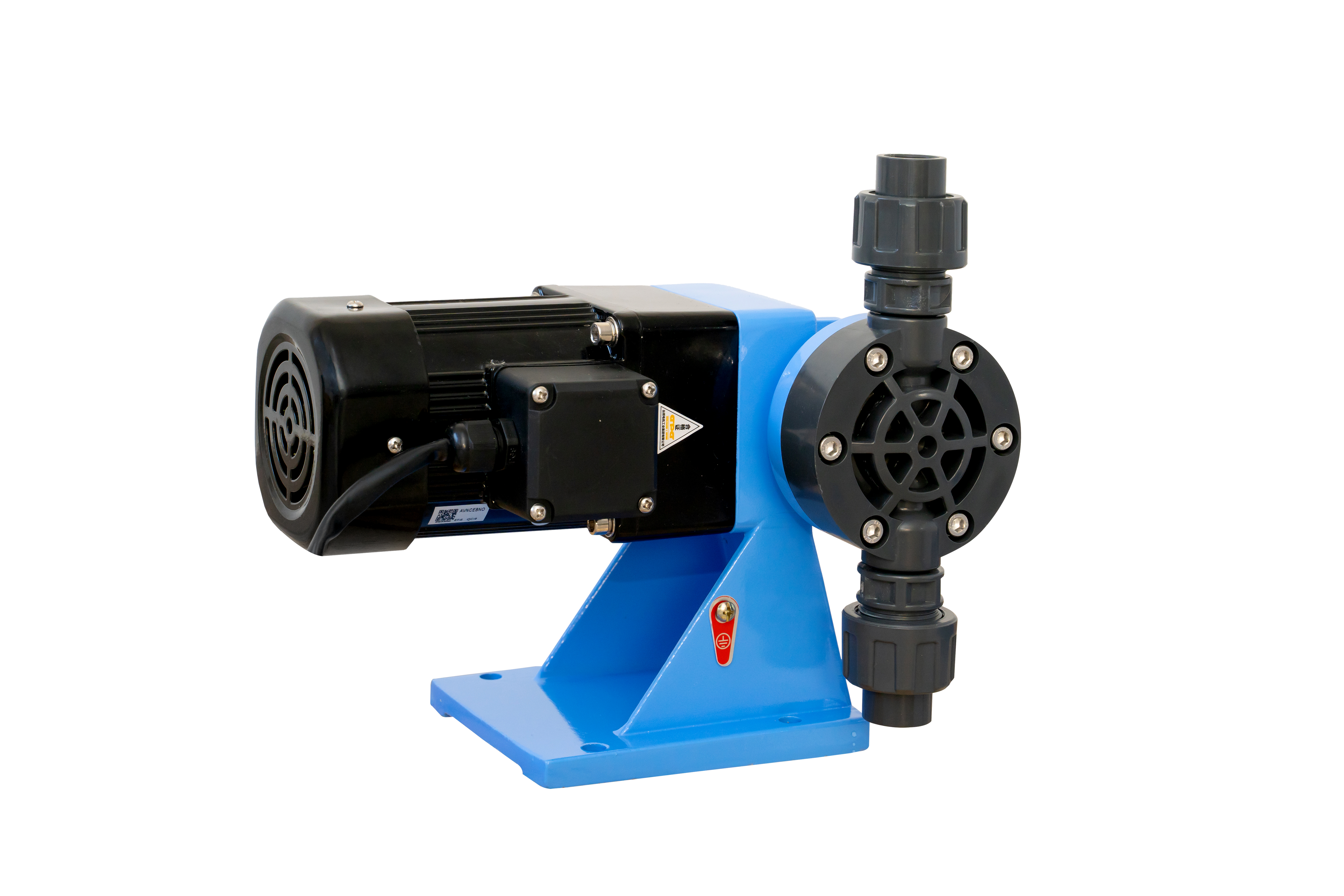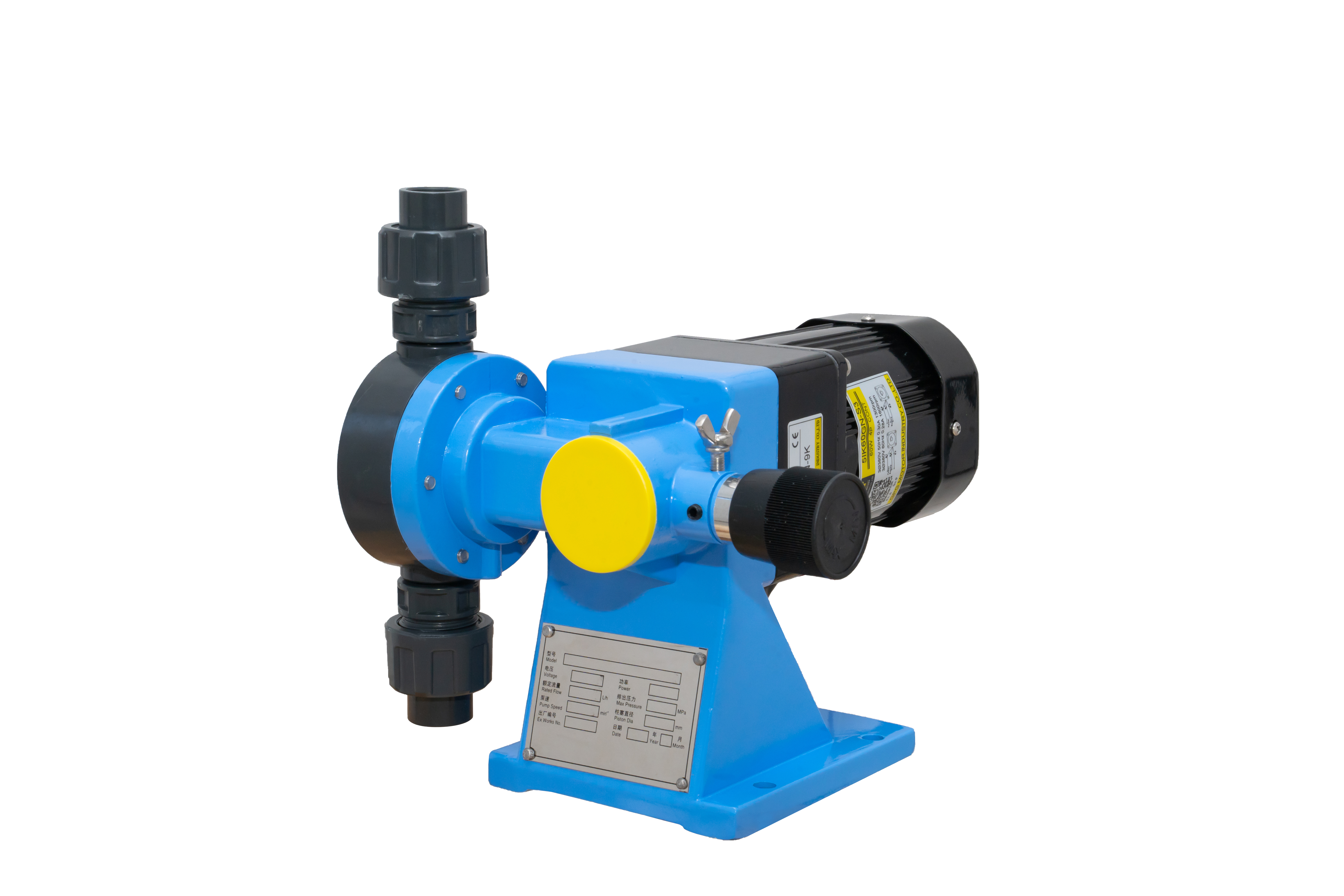- English
- Español
- Português
- русский
- Français
- 日本語
- Deutsch
- tiếng Việt
- Italiano
- Nederlands
- ภาษาไทย
- Polski
- 한국어
- Svenska
- magyar
- Malay
- বাংলা ভাষার
- Dansk
- Suomi
- हिन्दी
- Pilipino
- Türkçe
- Gaeilge
- العربية
- Indonesia
- Norsk
- تمل
- český
- ελληνικά
- український
- Javanese
- فارسی
- தமிழ்
- తెలుగు
- नेपाली
- Burmese
- български
- ລາວ
- Latine
- Қазақша
- Euskal
- Azərbaycan
- Slovenský jazyk
- Македонски
- Lietuvos
- Eesti Keel
- Română
- Slovenski
- मराठी
- Srpski језик
Metering pump is the core component of automatic dosing device
2022-06-28
Metering pump is the core component of automatic dosing device, and the pressure of the device, the properties of liquid medicine and the material composition jointly affect the selection of metering pump.. Once the metering pump fails, the whole dosing device can't work, so in general, the automatic dosing device adopts the design structure of double pumps working alternately.If one metering pump fails, the other standby pump can be started, which will not affect the continuous operation of the automatic dosing device. It is common for metering pumps to fail. Here are some possible failures of metering pumps and their troubleshooting methods.
1) metering pump suction is abnormal.
To the position of 100% of the rotation stroke length. In this way, the whole set of components can be rotated until the leakage discharge hole of the back plate is aligned with the bottom end of the pump. Adjust the hydraulic end and diaphragm to the appropriate position during pump operation.
The pulse duration may not be long enough for the reaction time. Compared with the standard pulse width of 80msec, the pulse width extension of the flow monitor can be activated to increase the pulse width to 300msec. Activate the intelligent transfer switch, remove the cover of the fixed circuit board and remove the jumper X-1. This activates the extended function, allowing more time before the fault is indicated.
Metering pump is installed with self-exhaust pump head, which adopts self-priming type to suck liquid. Keep the suction line as short as possible.
2) Disassemble and replace the diaphragm of metering pump.
When removing the old diaphragm, we often encounter trouble. Now provide some additional suggestions on how to remove the old diaphragm.
1. After the pump head is loose, before removing the pump head, adjust the stroke length to 0%. It can ensure that the electromagnetic shaft has enough pressure and keep its connection firm, so that the diaphragm can be unscrewed.
2. Pull the hydraulic end outward to disengage the screw from the socket. Grasp the liquid end and rotate counterclockwise. With a little resistance, you can unscrew the diaphragm.
3. The measured chemicals may crystallize at the hydraulic end, resulting in the ball and seat of the check valve not working properly.
4. There may be gas leakage at the suction end of the metering pump. The hydraulic suction side connector may lack O-ring or the suction valve connection is loose.
3) A high viscosity medium was measured by flow monitoring, and the flow failure indication signal was received during the liquid introduction process. What can be done to solve this problem?
Loosen the four pump head screws to move the hydraulic end. Rotate the stroke length to 0%, grab the hydraulic end, and then slide out from the screw hole, then the screw will not contact them, but still hold the back plate and diaphragm. Then rotate this part counterclockwise, and the diaphragm will loosen from the electromagnetic axis with a little resistance. If the diaphragm is not loose, use some lubricating oil on the contact surface between the diaphragm and the electromagnetic shaft. After standing for a few minutes, gently tap the diaphragm with a small plastic hammer. Then do it again according to the above description.
1) metering pump suction is abnormal.
To the position of 100% of the rotation stroke length. In this way, the whole set of components can be rotated until the leakage discharge hole of the back plate is aligned with the bottom end of the pump. Adjust the hydraulic end and diaphragm to the appropriate position during pump operation.
The pulse duration may not be long enough for the reaction time. Compared with the standard pulse width of 80msec, the pulse width extension of the flow monitor can be activated to increase the pulse width to 300msec. Activate the intelligent transfer switch, remove the cover of the fixed circuit board and remove the jumper X-1. This activates the extended function, allowing more time before the fault is indicated.
Metering pump is installed with self-exhaust pump head, which adopts self-priming type to suck liquid. Keep the suction line as short as possible.
2) Disassemble and replace the diaphragm of metering pump.
When removing the old diaphragm, we often encounter trouble. Now provide some additional suggestions on how to remove the old diaphragm.
1. After the pump head is loose, before removing the pump head, adjust the stroke length to 0%. It can ensure that the electromagnetic shaft has enough pressure and keep its connection firm, so that the diaphragm can be unscrewed.
2. Pull the hydraulic end outward to disengage the screw from the socket. Grasp the liquid end and rotate counterclockwise. With a little resistance, you can unscrew the diaphragm.
3. The measured chemicals may crystallize at the hydraulic end, resulting in the ball and seat of the check valve not working properly.
4. There may be gas leakage at the suction end of the metering pump. The hydraulic suction side connector may lack O-ring or the suction valve connection is loose.
3) A high viscosity medium was measured by flow monitoring, and the flow failure indication signal was received during the liquid introduction process. What can be done to solve this problem?
Loosen the four pump head screws to move the hydraulic end. Rotate the stroke length to 0%, grab the hydraulic end, and then slide out from the screw hole, then the screw will not contact them, but still hold the back plate and diaphragm. Then rotate this part counterclockwise, and the diaphragm will loosen from the electromagnetic axis with a little resistance. If the diaphragm is not loose, use some lubricating oil on the contact surface between the diaphragm and the electromagnetic shaft. After standing for a few minutes, gently tap the diaphragm with a small plastic hammer. Then do it again according to the above description.


Previous:Usage of metering pump


